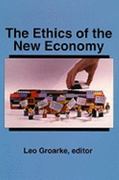Question
Multiple Choice Part (a)-(b) are based on the following scenario. Consider the following Heckscher-Ohlin model. Spain and Italy produce shoes and T-shirts using capital and
Multiple Choice
Part (a)-(b) are based on the following scenario. Consider the following Heckscher-Ohlin model. Spain
and Italy produce shoes and T-shirts using capital and labor. Spain is labor abundant and Italy is capital
abundant. Shoes are capital-intensive and T-shirts are labor intensive.
(a). Suppose both countries are in closed economy equilibria. Which of the following state
ment is correct?
A. Spain has a larger labor force than Italy because Spain is labor abundant.
B. In Italy, the shoes industry employs more capital than the T-shirt industry because shoes
are capital intensive.
C. The relative price of shoes, in terms of T-shirts, is higher in Italy than in Spain.
D. The shoes industry has a lower labor-capital ratio than the T-shirts industry in both
countries.
(b). Suppose Spain and Italy move from closed economy to free trade. Which of the following
statement is correct?
A. Italy produces more shoes and less T-shirts.
B. The opportunity cost of shoes increases in Spain.
C. The relative supply of labor increases in Spain as Spain expands its T-shirts production.
D. In Spain, the output of T-shirts increases, and so this industry's relative demand for labor
increases (i.e. the RD curve itself shifts to the right).
Part (c)-(d) are based on the following scenario. Suppose that the free-trade price of a ton of steel
is 500 euros. Finland, a small country, imposes a 60 euros-per-ton specifific tariff on imported steel.
With the tariff, Finland produces 300,000 tons of steel and consumes 600,000 tons of steel.
(c). Which of the following statements is incorrect?
A. The tariff makes Finnish steel producers better off.
B. The tariff makes Finnish steel consumers better off.
C. The tariff raises the domestic market price of steel in Finland by 60 euros per ton.
D. Finland collects the tariff revenue of 18 million euros.
(d). Which of the following statements is incorrect?
A. The tariff reduces Finland's national welfare, partly because Finnish steel producers pro
duce too much relative to the efficient level of output.
B. The tariff reduces Finland's national welfare, partly because Finnish steel consumers
consume too much relative to the efficient level of output.
C. Finland's production loss due to the tariff equals 3 million euros.
D. Finland's consumption loss due to the tariff equals 3 million euros.
(e). A Canadian tourist travels to France and buys a box of macaroons. She pays with her
RBC Bank credit card. Which of the following correctly describes the entries in Canada's balance
of payment?
A. Current Account credit: goods import; financial account debit: export of Canadian assets
B. Current Account debit: goods import; financial account credit: import of Canadian assets
C. Current Account credit: goods import; financial account debit: import of Canadian assets
D. Current Account debit: goods import; financial account credit: export of Canadian assets
(f). Which of the following is describing an effect that is consistent with standard assumptions
in the AA-DD model?
A. During the Great Depression of the 1930s, the nominal interest rate hit zero in the United
States, and the country found itself caught in a liquidity trap.
B. Economists estimated that, for OECD countries, 10 percent nominal depreciation of the
domestic currency caused the import price level to rise by 6.4 percent in the long run.
Their estimates indicate that exchange rate pass-through is incomplete.
C. Canada's long run price elasticity for exports is around 0.71 and the absolute value of long
run price elasticity for imports is around 0.72. The sum of the relative price elasticities
of export and import demand exceeds 1.
D. Following a real currency depreciation, a country found that its current account worsens
immediately and improves only in the long run.
Step by Step Solution
There are 3 Steps involved in it
Step: 1

Get Instant Access to Expert-Tailored Solutions
See step-by-step solutions with expert insights and AI powered tools for academic success
Step: 2

Step: 3

Ace Your Homework with AI
Get the answers you need in no time with our AI-driven, step-by-step assistance
Get Started


